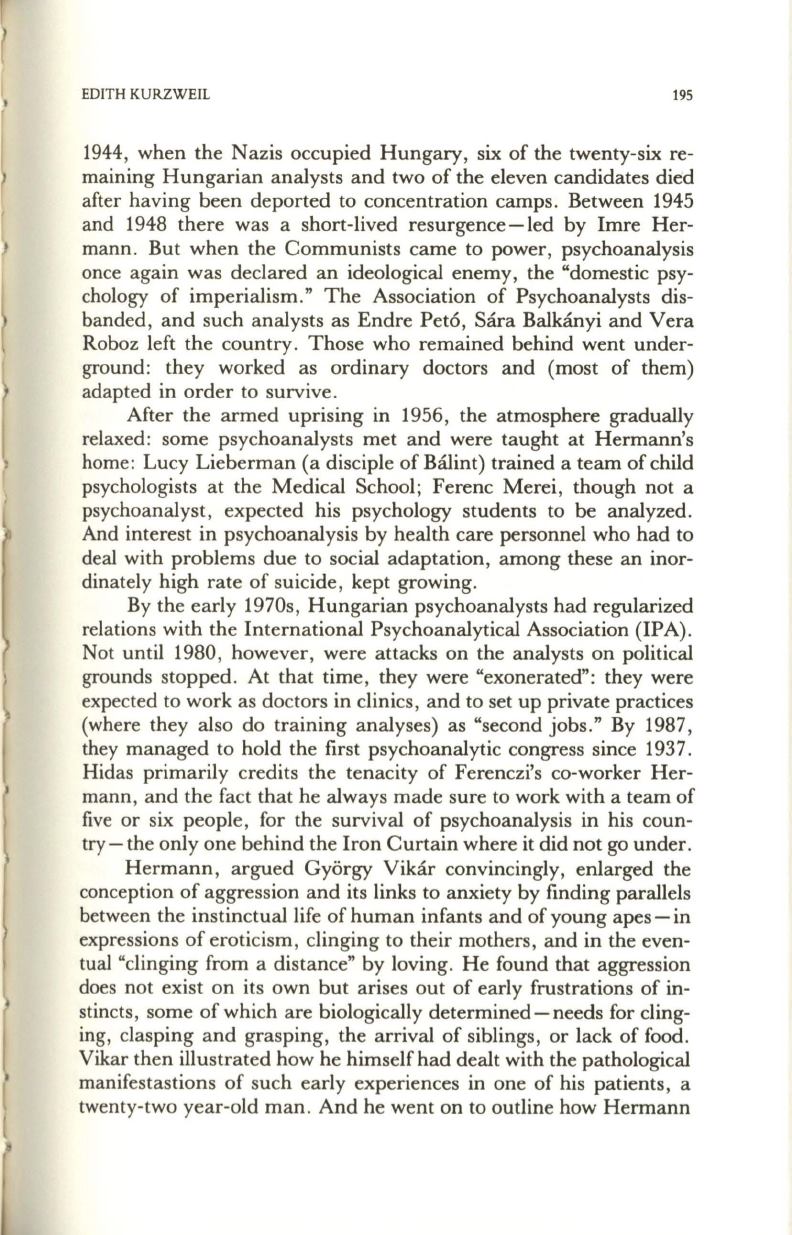
EDITH KURZWEIL
195
1944, when the Nazis occupied Hungary, six of the twenty-six re–
maining Hungarian analysts and two of the eleven candidates died
after having been deported to concentration camps . Between 1945
and 1948 there was a short-lived resurgence-led by Imre Her–
mann. But when the Communists came to power, psychoanalysis
once again was declared an ideological enemy, the "domestic psy–
chology of imperialism." The Association of Psychoanalysts dis–
banded , and such analysts as Endre Peta, Sara Balkanyi and Vera
Roboz left the country . Those who remained behind went under–
ground : they worked as ordinary doctors and (most of them)
adapted in order to survive.
After the armed uprising in 1956, the atmosphere gradually
relaxed : some psychoanalysts met and were taught at Hermann's
home : Lucy Lieberman (a disciple of Balint) trained a team of child
psychologists at the Medical School; Ferenc Merei, though not a
psychoanalyst , expected his psychology students to
be
analyzed.
And interest in psychoanalysis by health care personnel who had to
deal with problems due to social adaptation, among these an inor–
dinately high rate of suicide, kept growing.
By the early 1970s, Hungarian psychoanalysts had regularized
relations with the International Psychoanalytical Association (IPA).
Not until 1980, however, were attacks on the analysts on political
grounds stopped . At that time , they were "exonerated": they were
expected to work as doctors in clinics, and to set up private practices
(where they also do training analyses) as "second jobs ." By 1987,
they managed to hold the first psychoanalytic congress since 1937.
Hidas primarily credits the tenacity of Ferenczi's co-worker Her–
mann , and the fact that he always made sure to work with a team of
five or six people , for the survival of psychoanalysis in his coun–
try-the only one behind the Iron Curtain where it did not go under.
Hermann , argued Gyorgy Vikar convincingly, enlarged the
conception of aggression and its links to anxiety by finding parallels
between the instinctual life of human infants and of young apes - in
expressions of eroticism, clinging to their mothers , and in the even–
tual "clinging from a distance" by loving. He found that aggression
does not exist on its own but arises out of early frustrations of in–
stincts , some of which are biologically determined - needs for cling–
ing, clasping and grasping, the arrival of siblings, or lack of food.
Vikar then illustrated how he himself had dealt with the pathological
manifestastions of such early experiences in one of his patients, a
twenty-two year-old man . And he went on to outline how Hermann


